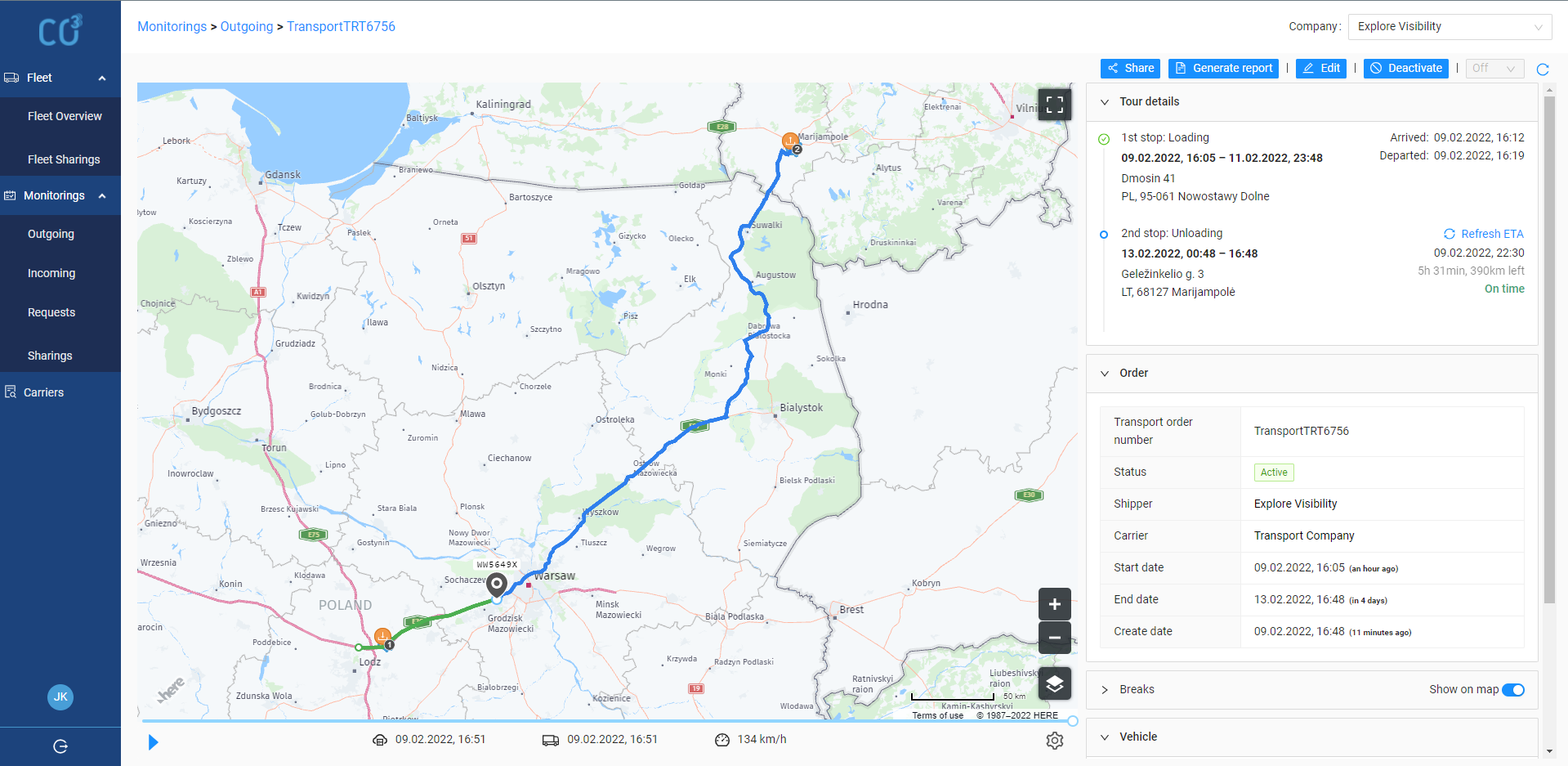‘Vehicle-centred monitoring is obsolete’ says digital logistics start-up CO3
By Will Hall - 14th April 2022

Grzegorz Patynek, CEO and Co-founder of CO3
Poland - Grzegorz Patynek, CEO and Co-founder of digital monitoring start-up CO3* (a software supplier for transport and logistics) explains to Truck & Bus Builder how the logistics industry must adapt to take advantage of new technologies
T&BB: What is the largest challenge facing the digital logistics sector?
Patynek:
From our point of view, the most important challenge today is to change the approach to visibility. The current standard, in which the vehicle serves as the point of monitoring is in our opinion obsolete. Carriers are increasingly preferring a new model which replaces the vehicle-centred monitoring standard with the permanent monitoring of specific orders, otherwise known as transport-order-monitoring. Rising awareness of transport-order-monitoring will help overcome barriers on the part of transport service providers and will lead to the popularization of real-time monitoring.
Patynek:
On the other hand, it is crucial to build awareness surrounding the potential of data obtained through visibility systems. The mere information about the location of the vehicle does not actually say anything by itself. Only in combination with geo-fencing, alerts, and activities can real-time monitoring create value in the supply chain. A good example is the automatic change of the unloading window when the ETA of a shipment changes. The solution saves time and money for all interested parties.

CO3’s vehicle monitoring platform
Is the role of geofencing important?
Due to the use of geofencing functionality in CO3’s platform, users can gain information about the travel times of tracked vehicles to specific zones on the route and the times of leaving them.
Patynek:
Although geofencing technology is in fact simple, it gives people responsible for overseeing transports and supply chains a wide range of possibilities. The administrator receives a notification in the system when a truck enters a specific zone. Depending on how these areas are defined, various conclusions can be drawn from the notifications sent. First of all, forwarders can receive information that allows them to predict travel times to the next places on the route at each stage: about leaving the warehouse, crossing the state border, arriving at the planned stop, etc. Geofencing can, however, also be used: to send an alert if a vehicle leaves a planned route or to calculate a wage based on the the duration of stay in a country with additional laws regarding it. The way information is used depends only on the needs and creativity of the person having access to it.
What are CO3’s plans for 2022?
Patynek:
Our main goal this year is to start the change of the market standards for visibility. We strive to replace the vehicle-centred monitoring standard related to the permanent monitoring service with the monitoring of specific orders. By emphasizing the development of order monitoring, we want to take advantage of and strengthen the trend, which has its source in the preferences of carriers. We want to stand out from the competition as precursors of monitoring based on the identification number of the transport order, and not the registration number of the vehicle that carries it out. We have an ambitious goal of a 50% increase in the number of monitored orders monthly on a year-to-year basis. We believe that it will be possible thanks to the constant expansion of our solution based on the needs of customers - also those related to their concerns about the permanent provision of monitoring to their customers. The challenge will undoubtedly be to adapt the CO3 platform to a diverse market even better. We will strive to be able to increase the value of the reported data based on extensive descriptions of the individual orders typical of large forwarding companies.
*About CO3
CO3 Sp. z o.o., a supplier of visibility software for the transport, shipping and logistics industry based in Wrocław, Poland, begun operations in December 2018. The firm’s products are currently operating in over 25 European countries with around 480,000 vehicles logged in its system; of these, about 45,000 are monitored daily. CO3 has aggregated a large number of carriers from Central, Eastern and Southern Europe, which the firm states is important from the perspective of the end-to-end model. The company claims that CO3 is a universal solution, available regardless of the size of the fleet, integrating both microcarrier fleets with one vehicle up to large transport companies with dozens of trucks.
Due to the flexible structure of CO3 and the fact that the product is constantly developing, the firm has opportunities to adjust its functionality for specific needs. If the solution currently lacks the data that a client requires, CO3 is able to offer custom-made functionalities. Furthermore, solutions prepared as part of cooperation with individual clients can be made available to other users.


